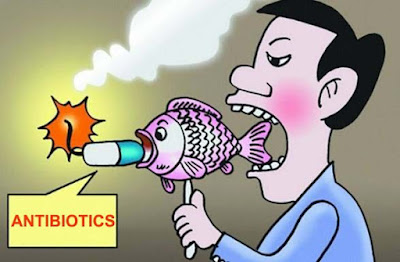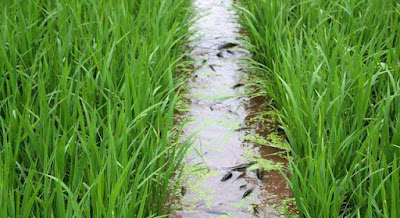The maximum outdoor temperature is nearly 40°C, but the temperature is comfortable in the rows of large breeding workshops in Wugang Village, Gaozi Street, Dantu District, without the slightest feeling of heat and dryness. On August 10, the reporter came to Zhenjiang Xinrun Agricultural Development Co., Ltd. In a large workshop of more than 800 square meters, there are several giant breeding ponds, and the water temperature is adjusted according to the species and age of the fish. There are more than 10 such aquaculture workshops, which can produce more than 100,000 catties of high-grade finished fish each year, which is in short supply in the market.
The chairman of the company, Xie Xudong, was the first "Top Ten Farmers" in Dantu District. He was obsessed with science and technology, and after many ups and downs, he finally made a major breakthrough in the technology of factory-based "smart farming". On the well-off road.
Chasing dreams and forming an indissoluble bond with "fishing"
Xie Xudong, 40 years old this year, looks relatively white, mainly due to the result of long-term indoor breeding. He told reporters that he had a strong interest in farming since he was a child, and when he went to middle school, he became more and more interested in fish farming. On the eve of the college entrance examination, his first choice was to apply for the biotechnology major of Jiangsu Ocean University, and the result came true. His first job after graduation was related to fishing, which was a dream come true for him.
In 2005, Xie Xudong entered a well-known domestic company in Wuxi at that time, engaged in the sales of aquatic additives, which benefited him a lot. He further learned from his work that different fish have great differences in water quality, temperature, climate, and disease resistance. This opens a whole new window for Xie Xudong. He could never learn such professional knowledge in university, which is a huge wealth.
"In those years, I collected and sorted out a lot of technical information on fish farming, and made a lot of notes." Xie Xudong said that due to the needs of his work, he traveled south and north, established contacts with many domestic farmers, and deeply realized the hardships of aquaculture. And risks, some farmers will cause hundreds of thousands or millions of losses due to a small negligence. To this end, he always shared his experience with farmers for free, which was widely praised and played a good exemplary role.
After accumulating several years of work experience, in 2013, Xie Xudong gave up the high salary of more than 400,000 yuan per year from his original unit and returned to his hometown Dantu to start his own business. Compared with other aquaculture farmers in the village, he does not dig ponds first, but builds large workshops. Xie Xudong said that only factory-based intelligent farming and the use of scientific and technological means can change the outdated pattern of "depending on the sky", and the aquaculture industry can walk out of the road of innovation and usher in new opportunities.
Scientifically farming shad finally succeed
"Only a high starting point can open up a new market pattern and obtain high benefits." Xie Xudong said, with the continuous development of agricultural modernization, the development momentum of scientific and technological breeding has been rapid in recent years, and the factory-based breeding model has become more and more advantageous, but this This model has higher investment, higher risk, and longer return period. Seeing that the breeding workshop has cost more than 10 million yuan and is still unfinished, many villagers are sweating for Xie Xudong, but at this time Xie Xudong has already There is no way out.
American shad cultivated by Xie Xudong
As a native of Zhenjiang, he has unique memories and feelings for shad, saury, and puffer fish, which are the "three fresh products of the Yangtze River". In recent years, the Yangtze shad has almost disappeared from the public eye. Xie Xudong learned by chance that there is an American shad in North America with similar climatic conditions to Zhenjiang, which is similar to domestic shad in both appearance and meat quality, and has been successfully introduced and cultivated.
It is precisely because of the American shad farming that Xie Xudong spent a lot of money to build a factory-like intelligent farming greenhouse workshop. He traveled thousands of miles to the origin of the American shad, went deep into the spawning area, and actively introduced wild populations. In conjunction with the Freshwater Fisheries Research Center of the Chinese Academy of Fishery Sciences, the Jiangsu Fishery Technology Promotion Center and other scientific research units, a special project has been established to overcome the difficulties in the selection and breeding of American shad. At present, his company has become the enterprise with the most abundant species of American shad parentage in Jiangsu, and it is also one of the few enterprises in China that has successfully mastered the full artificial breeding of American shad.
Xie Xudong told reporters that each pond in the breeding workshop has a capacity of more than 500 cubic meters, and the temperature, humidity, oxygen content, feed ratio, nutrition regulation, disease prevention and control and many other aspects have intelligent processing modes, and the breeding environment is not weak. Due to the natural environment and the delicious meat of the fish, it is widely welcomed by high-end hotels. At present, merchants from all over the province and from Shanghai, Zhejiang, Anhui and other places are coming, and the supply of shad is in short supply. This year alone, the company has bred more than 1 million shad fry, cultivated more than 100,000 catties of adult fish, established a company and farmers with an area of more than 500 mu for promotion and demonstration, with a total output value of more than 50 million yuan.
Bass Farming leads the villagers to get rich
The success of American shad farming has also made Xie Xudong "fire" and has become a well-known technology breeding expert, but for Xie Xudong, he still feels a little lost. Except for a few farmers who are willing to breed American shad, most People shy away from it. The main reason is that American shad farming is a high-cost and high-return project, which is difficult for ordinary farmers to bear. In order to help more villagers get rich, Xie Xudong did not stop, and after American shad farming got on the right track, he focused his attention on the species of California bass.
California sea bass, scientific name largemouth bass, is native to the Americas and has been introduced to China for decades. In recent years, with the breakthrough of artificial breeding technology and artificial compound feed domestication technology, the breeding area has increased significantly, the cost has also been reduced a lot, and the market benefits are good. However, due to the lack of large-scale nursery bases in Zhenjiang, farmers can only buy fry from Zhejiang, Guangdong and other places, but they are often deceived because they do not understand the situation.
Xie Xudong took advantage of his professionalism and the facilities of the company to buy better California perch from different regions for breeding. Through comparison, he concluded a reliable source of fry, and then cooperated with local farmers to purchase in a group. This not only ensures the quality of the fry, but also saves the cost of farmers. He also imparts technology free of charge, which drives the majority of farmers to embark on the road of prosperity. Xie Xudong often said that the future of the breeding industry is limitless, and with the care of the party and the government and the help of the scientific research team, it will surely usher in better development.
In recent years, Xie Xudong and his team have continuously increased investment in scientific and technological research and development, and have successively undertaken and participated in the Jiangsu Province Agricultural Machinery Three New Projects "Integrated Application of Mechanization Technology in Key Links of Healthy Shad Breeding", Zhenjiang City Science and Technology Plan Project "Yangtze-mouthed mandarin fish" 8 agricultural science and technology projects including "Integration and Application of Efficient Ecological Breeding Technology". This year, his company was recognized as "Jiangsu Provincial Advanced Breeding Farm" by Jiangsu Provincial Department of Agriculture and Rural Affairs, and was awarded the "Provincial Genetics Society Scientific and Technological Service" by Jiangsu Genetics Society. Station", and jointly established and listed the "Comprehensive Experimental Demonstration Base of Freshwater Fisheries Research Center" with the Chinese Academy of Fishery Sciences; accumulatively published 3 scientific papers in professional journals, and obtained 2 patents authorized by the state.







